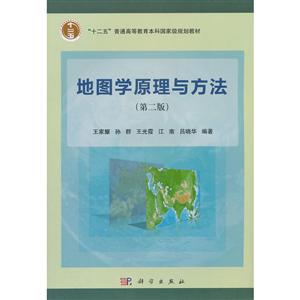
作者:闫浩文
页数:328
出版社:科学出版社
出版日期:2009
ISBN:9787030248763
电子书格式:pdf/epub/txt
内容简介
本书主要研究如何测定和记录地面点的位置、高程,以及如何确定地球的形状大小。全书分为两部分:传统测量学原理和当代测量学原理。部分论述运用传统仪器进行测量工作的技术和手段;第二部分论述地理信息系统、优选定位系统、摄影测量等的基本原理。形式上,本书全文以英文撰写;内容上,尽量吸收国外同行优选的理念和方法,力求思想的“靠前性”,但在具体方法的应用上又以我国的标准、规范为依据,以便国内读者的使用。本书可供测绘、地理、遥感、土木工程、地质等专业的高年级本科学生使用,亦可作为相关专业研究生的教学参考用书,或供相关领域的科技工作者参阅。
目录
Contents
Preface
Part 1 Conventional Surveying
Chapter 1 Introductory 3
1.1 Basic concepts of surveying 3
1.2 Basic principles in surveying 7
1.3 Survey references 7
1.4 Methods used in point locations 9
1.5 History of surveying 10
1.6 Exercises 14
Chapter 2 Leveling 15
2.1 Definition and principles of leveling 15
2.2 Elements of the surveyors’ level 19
2.3 Types of instruments used in leveling 25
2.4 Methods of leveling 38
2.5 Accuracy in leveling 50
2.6 Mistakes in leveling 51
2.7 Suggestions for instrument and rod work 52
2.8 Exercises 53
Chapter 3 Angles and Directions-Theories 57
3.1 Reference directions for vertical angles 57
3.2 Horizontal angles 58
3.3 Three north directions 59
3.4 Azimuths and bearing 60
3.5 Exercises 66
Chapter 4 Instruments for Angles and Directions Surveying 69
4.1 Theodolites and transits 69
4.2 Magnetic azimuth (bearing) surveying: magnetic compass 98
4.3 True azimuth (bearing) surveying 100
4.4 Exercises 111
Chapter 5 Distance Measurement 114
5.1 Methods for distance determination 114
5.2 Taping 116
5.3 Electromagnetic distance measurement 123
5.4 Summary of distance measurement methods 137
5.5 Exercises 138
Chapter 6 Traverse Surveying 140
6.1 An introductory to traverses 140
6.2 Field work in traverse surveying 141
6.3 0fficc work in traverse surveying 145
6.4 Exercises 157
Chapter 7 Error Theories 159
7.1 Introduction 159
7.2 Relevant definitions 162
7.3 Law of errors propagation 165
7.4 The method of least square and its application 168
7.5 Calculation of standard deviation by true errors 177
7.6 Several examples using the law of errors propagation 180
7.7 Exercises 182
Chapter 8 Topographic Maps 185
8.1 Concepts of map and topographic map 185
8.2 Map scales and scale precisions 186
8.3 Map grids 187
8.4 Gauss-Krüger projection 188
8.5 Subdivisions and numbering of topographic maps 192
8.7 Application of topographic maps 201
8.8 Exercises 220
Chapter 9 Topographic Surveying 223
9.1 Background 223
9.2 Topographic control framework 223
9.3 Methods for detail surveys 225
9.4 Procedures of conventional topographic surveys 231
9.5 Digital mapping techniques 235
9.6 Exercises 237
Part 2 Modern Surveying
Chapter 10 Global Positioning Systems 241
10.1 Introduction 241
10.2 GPS configurations 242
10.3 Work principles of GPS 245
10.4 Geodetic aspects of GPS 252
10.5 GPS in practical surveys 256
10.6 Exercises 263
Chapter 11 Geographic Information Systems 265
11.1 General background of GIS 265
11.2 Activitics and componcnts of a GIS 268
11.3 Data collections of GIS 269
11.4 Data analysis 274
11.5 Practical applications of GIS 284
11.6 Somc important conccpts in GIS 285
11.7 Exercises 287
Chapter 12 Photogrammetry 288
12.1 An introductory background 288
12.2 Acrial photogrammetry 289
12.3 Terrestrial photography 301
12.4 Stereo-photography 304
12.5 Close-range photography 307
12.6 Applications of photography 307
12.7 Exercises 313
Referenced Bibliographies 314
Referenced Internet Resources 315
Appendix: Math Foundation 317
Preface
Part 1 Conventional Surveying
Chapter 1 Introductory 3
1.1 Basic concepts of surveying 3
1.2 Basic principles in surveying 7
1.3 Survey references 7
1.4 Methods used in point locations 9
1.5 History of surveying 10
1.6 Exercises 14
Chapter 2 Leveling 15
2.1 Definition and principles of leveling 15
2.2 Elements of the surveyors’ level 19
2.3 Types of instruments used in leveling 25
2.4 Methods of leveling 38
2.5 Accuracy in leveling 50
2.6 Mistakes in leveling 51
2.7 Suggestions for instrument and rod work 52
2.8 Exercises 53
Chapter 3 Angles and Directions-Theories 57
3.1 Reference directions for vertical angles 57
3.2 Horizontal angles 58
3.3 Three north directions 59
3.4 Azimuths and bearing 60
3.5 Exercises 66
Chapter 4 Instruments for Angles and Directions Surveying 69
4.1 Theodolites and transits 69
4.2 Magnetic azimuth (bearing) surveying: magnetic compass 98
4.3 True azimuth (bearing) surveying 100
4.4 Exercises 111
Chapter 5 Distance Measurement 114
5.1 Methods for distance determination 114
5.2 Taping 116
5.3 Electromagnetic distance measurement 123
5.4 Summary of distance measurement methods 137
5.5 Exercises 138
Chapter 6 Traverse Surveying 140
6.1 An introductory to traverses 140
6.2 Field work in traverse surveying 141
6.3 0fficc work in traverse surveying 145
6.4 Exercises 157
Chapter 7 Error Theories 159
7.1 Introduction 159
7.2 Relevant definitions 162
7.3 Law of errors propagation 165
7.4 The method of least square and its application 168
7.5 Calculation of standard deviation by true errors 177
7.6 Several examples using the law of errors propagation 180
7.7 Exercises 182
Chapter 8 Topographic Maps 185
8.1 Concepts of map and topographic map 185
8.2 Map scales and scale precisions 186
8.3 Map grids 187
8.4 Gauss-Krüger projection 188
8.5 Subdivisions and numbering of topographic maps 192
8.7 Application of topographic maps 201
8.8 Exercises 220
Chapter 9 Topographic Surveying 223
9.1 Background 223
9.2 Topographic control framework 223
9.3 Methods for detail surveys 225
9.4 Procedures of conventional topographic surveys 231
9.5 Digital mapping techniques 235
9.6 Exercises 237
Part 2 Modern Surveying
Chapter 10 Global Positioning Systems 241
10.1 Introduction 241
10.2 GPS configurations 242
10.3 Work principles of GPS 245
10.4 Geodetic aspects of GPS 252
10.5 GPS in practical surveys 256
10.6 Exercises 263
Chapter 11 Geographic Information Systems 265
11.1 General background of GIS 265
11.2 Activitics and componcnts of a GIS 268
11.3 Data collections of GIS 269
11.4 Data analysis 274
11.5 Practical applications of GIS 284
11.6 Somc important conccpts in GIS 285
11.7 Exercises 287
Chapter 12 Photogrammetry 288
12.1 An introductory background 288
12.2 Acrial photogrammetry 289
12.3 Terrestrial photography 301
12.4 Stereo-photography 304
12.5 Close-range photography 307
12.6 Applications of photography 307
12.7 Exercises 313
Referenced Bibliographies 314
Referenced Internet Resources 315
Appendix: Math Foundation 317















